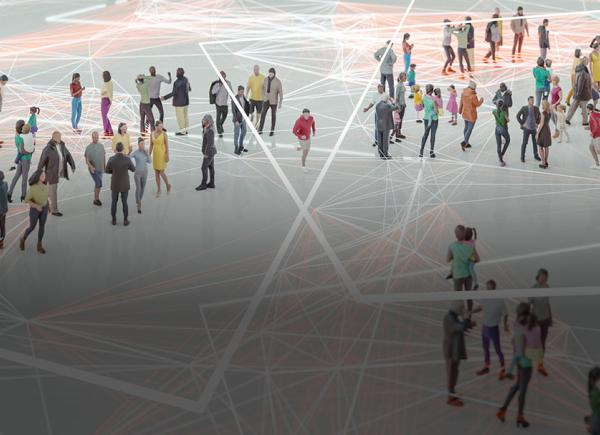What is Retail Banking?
Retail banking, also known as consumer banking, is a significant chunk of American enterprise. Consumer spending accounts for 70 percent of the economy in the United States, and retail banks enable all this spending through loans, debit cards, credit cards, and more.
How do Retail Banks Work?
Retail banks use the money consumers deposit to make loans and issue other types of credit. “Retail and commercial banks are essential for the smooth functioning of an economy,” explains Investopedia. “Most large banks have specialized divisions that deal in retail banking and corporate banking; both businesses are among the largest profit centers for most banks.” To make it all work, the Federal Reserve requires a retail bank to keep 10 percent of its deposits available and liquid, leaving retail banks free to loan or offer credit on 90 percent of their total deposits. In turn, retail banks earn money on the interest consumers pay, the fees they collect, and so on.
Products offered by Retail Banks
From checking accounts to mortgages, auto loans to credit cards, lines of credit to foreign currency exchange, the world of retail banking is vast. Retail banking consists of several types of banking products. The three main types of banking products:
- Money management services
- Credit services
- Deposit services
Money management involves the way consumers handle their money and includes checking accounts and debit cards. Deposit services include savings accounts, while credit covers all the loans and credit cards that consumers use to finance their lives. Retail banking can also include stock brokerages, wealth management and insurance, but these are usually offered through an affiliate of the retail bank rather than the retail bank itself. Since the world has moved away from cash or barter and towards systems requiring a credit to pay, retail banks popularity has continued to grow. According to Investopedia, the most popular retail banks in the United States are Bank of America, Citigroup, JP Morgan Chase, U.S. Bancorp and Wells Fargo.
How Retail Banks Affect the U.S. Economy
In many ways, retail banks act as money stores: a place where its members can purchase banking products. This makes retail banks a ballast for the economy. Take the 2008 recession, for example. After the housing bubble burst, it became apparent just how overexposed many of the world’s banks really were. Many had to declare bankruptcy and the ones that didn’t had to adopt strict lending standards, temporarily suspending loans. Those events shook the financial world and changed retail banking forever.
Retail Banking Popularity
Retail banking’s popularity has remained stable, especially as the world has moved away from cash or barter and toward payment systems that require a credit card to pay. In addition, people have moved to making purchases on credit instead of saving money in advance of a purchase. Both require retail banking to function. According to Investopedia, the most popular retail banks in the United States are Bank of America, Citigroup, JP Morgan Chase, U.S. Bancorp and Wells Fargo.
How Does Retail Banking Work?
Retail banks use the money consumers deposit to make loans and issue other types of credit. “Retail and commercial banks are essential for the smooth functioning of an economy,” explains Investopedia. “Most large banks have specialized divisions that deal in retail banking and corporate banking; both businesses are among the largest profit centers for most banks.” To make it all work, the Federal Reserve requires a retail bank to keep 10 percent of its deposits available and liquid, leaving retail banks free to loan or offer credit on 90 percent of their total deposits. In turn, retail banks earn money on the interest consumers pay, the fees they collect, and so on.
What Are Some Recent Retail Banking Trends?
Retail banking has been undergoing an evolution. The drive of technology and the need for regulation is changing the financial system on several fronts. In its 2017 Retail Banking Trends and Predictions report, The Digital Banking Report surveyed industry leaders about the retail banking trends. The biggest is a push to remove friction from the customer journey. “Leading banks will start converging mobile and online banking into new digital banking applications,” says Danny Tang, IBM transformation leader. “The new digital banking applications will offer many cross-channel services, such as text with contact center, video with relationship banker, cardless withdrawal at ATMs, appointment making, and transaction pre-staging prior to a branch visit.” The focus is on keeping banking streamlined, personalized and consistent so the retail banking experience is the same from app to website to branch location.
What is Envestnet | Yodlee’s Connection With Retail Banking?
Envestnet | Yodlee has a long, established history with the nation’s top retail banks. Our innovative fintech products empower retail banking customers to reach their financial wellness goals by gleaning actionable insights. Take the Envestnet | Yodlee Financial Wellness Solution for Retail Banking, for example. By tapping into the power of Artificial Intelligence, machine learning, and data science algorithms, our cutting-edge suite of applications and the Envestnet | Yodlee Platform API transcend the standard personal financial management (PFM) solution by offering actionable financial guidance to your retail banking customers, regardless of device, interface or platform.
Our Financial Wellness Solution for Retail Banking is driven by real-time account and transaction data from more than 17,000 sources and 100,000 separate account types. This transaction information is enriched and contextualized to deliver actionable insights that enable retail banks to help their customers measure, guide, and boost their financial health and well-being.
Build Your Solution With Our Products
- Drive financial wellness across digital channels with predictive and actionable financial wellness tools that empower your customers to reach their financial goals.
- Gain critical visibility into a consumer’s financial picture with access to consumer-permissioned data delivered through comprehensive, powerful risk insight reports.
- Drive meaningful digital insights and interactions with enriched and simplified transaction data.




